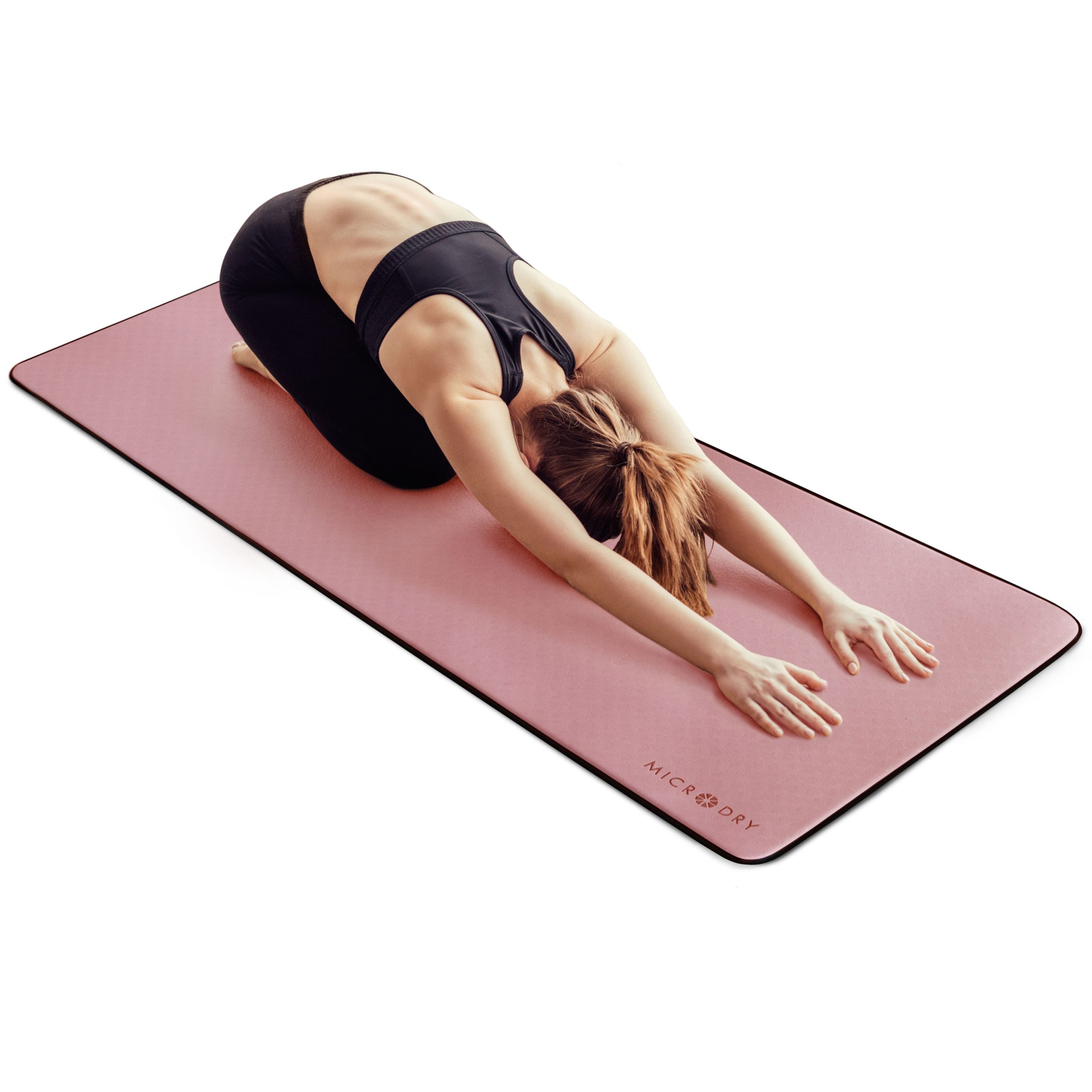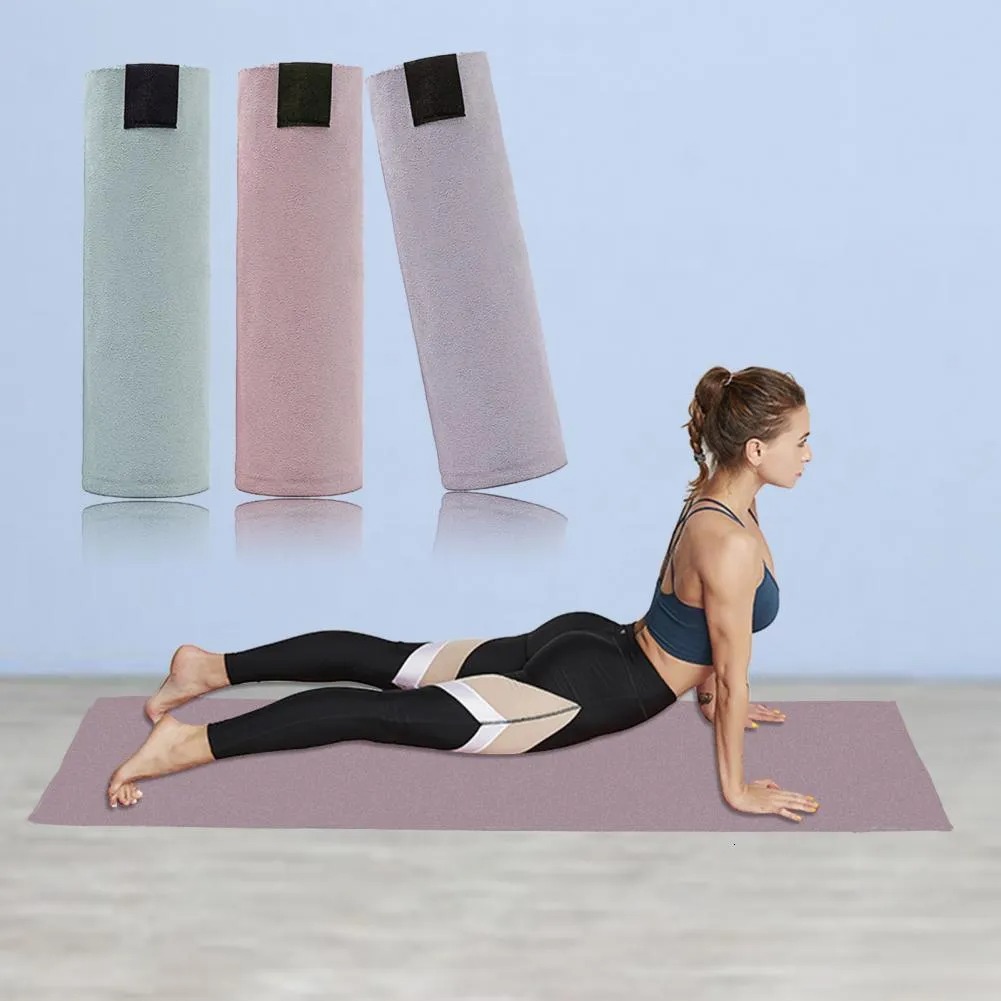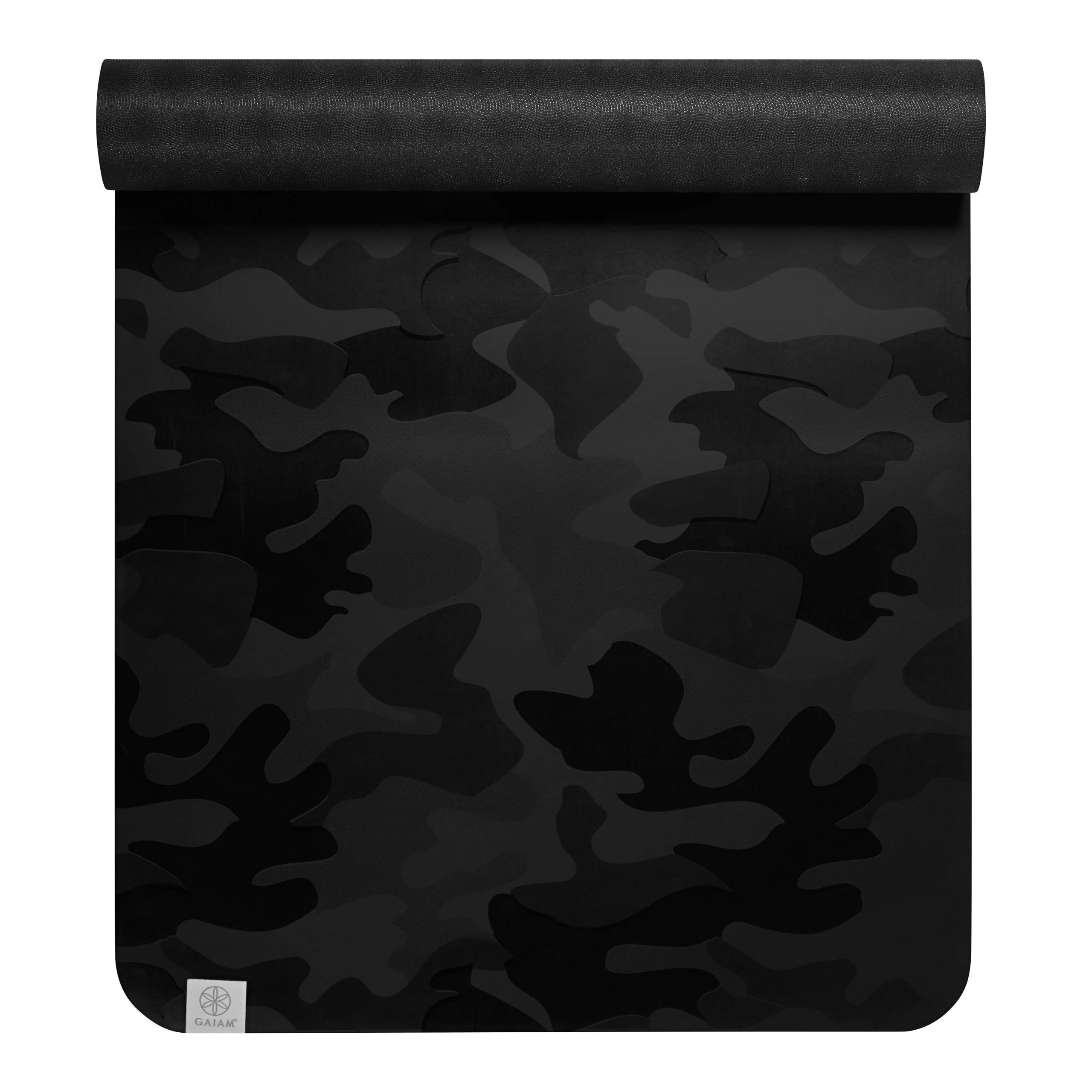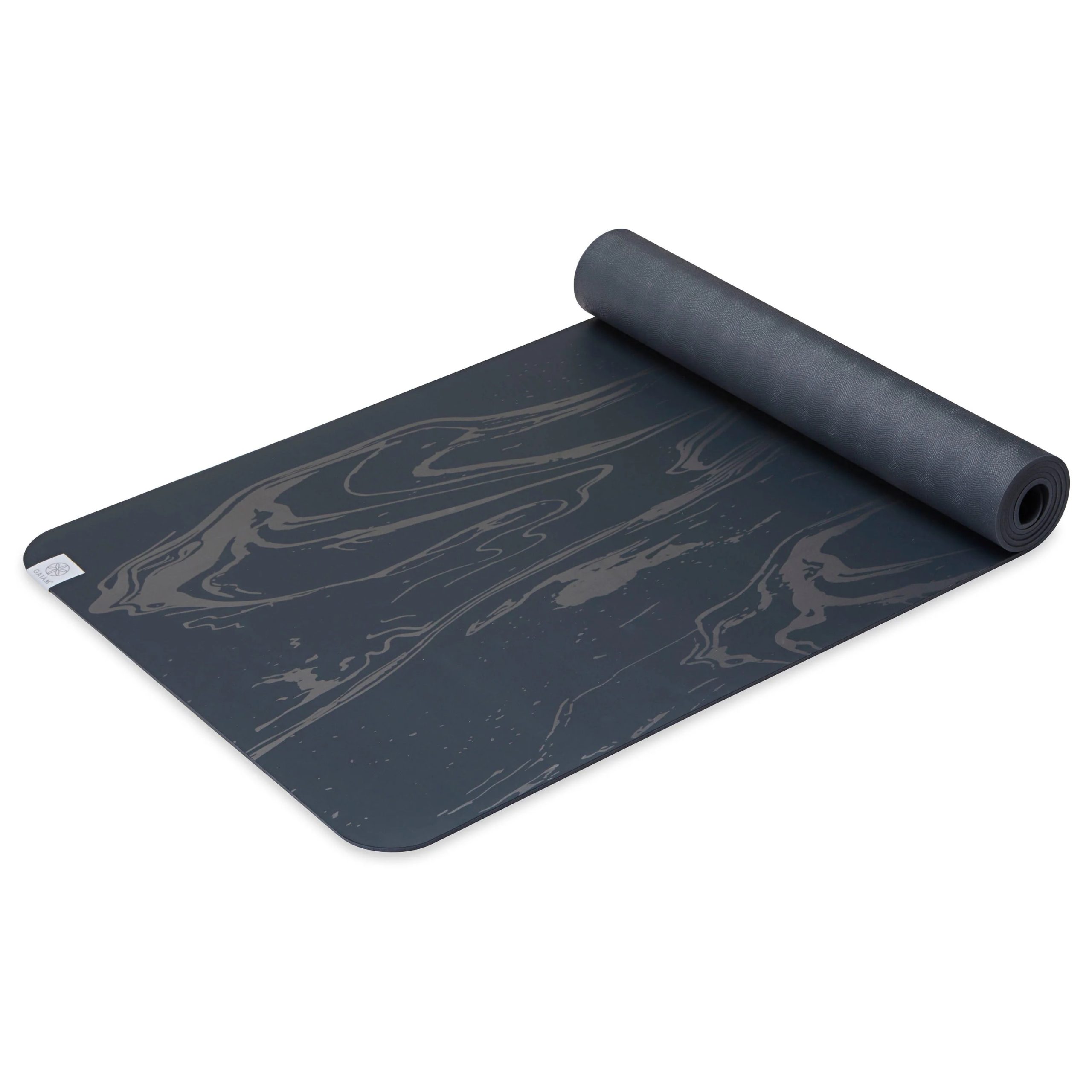How to dry a yoga mat? Yoga is a great way to relax, meditate, and stay active. Many people use yoga mats to cushion their bodies and prevent slipping while practicing yoga. After a sweaty yoga session, it’s important to properly dry your yoga mat to prevent bacteria and mold growth. In this article, we’ll discuss several methods to dry a yoga mat effectively.

Why is it important to dry a yoga mat?
A yoga mat is a breeding ground for bacteria and mold if it’s not properly dried after a yoga session. When you sweat on your mat, the moisture can seep into the material, creating the perfect environment for bacteria to flourish. Additionally, if the mat is left rolled up and damp, mold can start to grow. This can lead to an unpleasant smell and can also cause health issues. It’s essential to dry your yoga mat to keep it clean, fresh, and safe to use.
Air drying your yoga mat
One of the easiest and most effective ways to dry a yoga mat is to simply air dry it. After using your mat, unroll it and lay it on a flat surface in a well-ventilated area. If possible, place it outdoors to take advantage of the natural sunlight and airflow. The sun’s UV rays can help kill bacteria and mold that may be lingering on the mat. Leave the mat to dry for at least 24 hours, or until it feels completely dry to the touch.
Using a towel to speed up the drying process
If you need to use your yoga mat sooner rather than later, you can use a towel to speed up the drying process. After wiping down your mat with a damp cloth to remove any sweat or dirt, lay a clean, dry towel on top of the mat. Press down on the towel to absorb as much moisture as possible. Then, roll the mat and towel together and gently squeeze out any excess water. Unroll the mat and towel, and then hang the mat up to air dry in a well-ventilated area. The towel will help to wick away moisture and decrease drying time.
Using a hairdryer
If you’re in a hurry and need your yoga mat to dry quickly, you can use a hairdryer to speed up the process. Set the hairdryer to a low or medium heat setting and hold it a few inches away from the mat. Move the hairdryer back and forth over the mat, being careful not to stay in one spot for too long. This method can be effective for drying small areas of the mat, but it may take some time to dry the entire mat thoroughly.
Using a yoga mat dryer
For a more efficient and hands-off approach, you can invest in a yoga mat dryer. These devices are specifically designed to dry yoga mats quickly and effectively. They typically use warm air and gentle heat to dry the mat without damaging the material. Simply lay the mat on the dryer and let it work its magic. This method is convenient and ideal for those who frequently practice yoga and need a quick and hassle-free solution for drying their mats.

Proper storage to prevent moisture buildup
In addition to drying your yoga mat after each use, it’s important to store it properly to prevent moisture buildup. Avoid rolling up a damp mat and leaving it in a dark, enclosed space, as this can lead to mold growth. Instead, store your yoga mat in a cool, dry area where it can get plenty of airflow. Consider using a mat bag or hanging straps to keep the mat elevated and allow air to circulate around it.
How to use the yoga mat
If you’re new to yoga, or even if you’ve been practicing for a while, you may be wondering how to make the most of your yoga mat. A good quality yoga mat can make a world of difference to your practice, providing support, stability, and comfort as you move through your poses.
Choosing the Right Yoga Mat
Before we delve into using your yoga mat, let’s first talk about choosing the right one for you. There are a variety of yoga mats available on the market, with different thicknesses, materials, and textures. When choosing a yoga mat, consider the type of yoga you’ll be practicing, as well as any specific needs you may have. For example, if you’re planning to practice hot yoga, you may want a mat that provides extra grip and stability. Or, if you have sensitive joints, you might opt for a thicker, more cushioned mat.
Cleaning and Care
Once you’ve chosen your yoga mat, it’s important to keep it clean and well-maintained. Regular cleaning not only helps to extend the life of your mat, but also prevents the build-up of bacteria and odors. To clean your yoga mat, simply wipe it down with a damp cloth and a gentle, non-abrasive cleanser. For a deeper clean, you can also submerge your mat in a bathtub filled with water and a small amount of mild soap. After cleaning, be sure to air dry your mat thoroughly before rolling it up for storage.
Using Your Yoga Mat in Different Types of Yoga
Now that you have your yoga mat and it’s clean and ready to go, let’s talk about how to use it in different types of yoga practice.
Hatha Yoga:
In Hatha yoga, the focus is on achieving a balance between the body and mind through physical postures and breathing exercises. When using your yoga mat in Hatha yoga, make sure it’s long enough to accommodate your full range of movement. You’ll also want a mat with good grip to help you hold your poses.
Vinyasa Yoga:
Vinyasa yoga is a dynamic, flowing style of yoga that links movement with breath. In this style of yoga, your mat should provide good traction to prevent slipping as you transition between poses. Look for a mat with a textured, non-slip surface for added stability.
Bikram Yoga:
Bikram yoga is a type of hot yoga practiced in a heated room. In this intense and sweaty environment, it’s essential to have a highly absorbent, non-slip mat to prevent slipping and provide a secure base for your practice.
Restorative Yoga:
Restorative yoga focuses on relaxation and stress relief through gentle, passive stretching. For this type of yoga, a thicker, more cushioned mat can provide added comfort and support as you hold restorative poses for extended periods.

Tips for Enhancing Your Yoga Practice with Your Mat
In addition to using your yoga mat in different types of yoga, there are a few tips you can keep in mind to enhance your overall practice.
Alignment:
Your yoga mat can be a helpful tool for maintaining proper alignment in your poses. Use the lines and markings on your mat to guide the placement of your hands and feet, ensuring that you’re in the correct position for each pose.
Mindfulness:
As you move through your practice, take notice of the sensation of your mat against your body. Focus on grounding down through your feet, hands, and knees, feeling the support and stability your mat provides.
Breathing:
Your yoga mat can also serve as a reminder to connect with your breath. Use the rhythm of your breath to guide your movement and flow on your mat, creating a sense of fluidity and ease in your practice.

Conclusion
Properly drying your yoga mat is essential for maintaining its cleanliness and preventing bacteria and mold growth. Whether you choose to air dry your mat, use a towel, hairdryer, or yoga mat dryer, it’s important to ensure that the mat is completely dry before using it again. By following these methods and tips, you can keep your yoga mat fresh, clean, and safe for your next yoga session. Strengthen your practice and keep your mat in top condition by incorporating these drying methods into your post-yoga routine.
